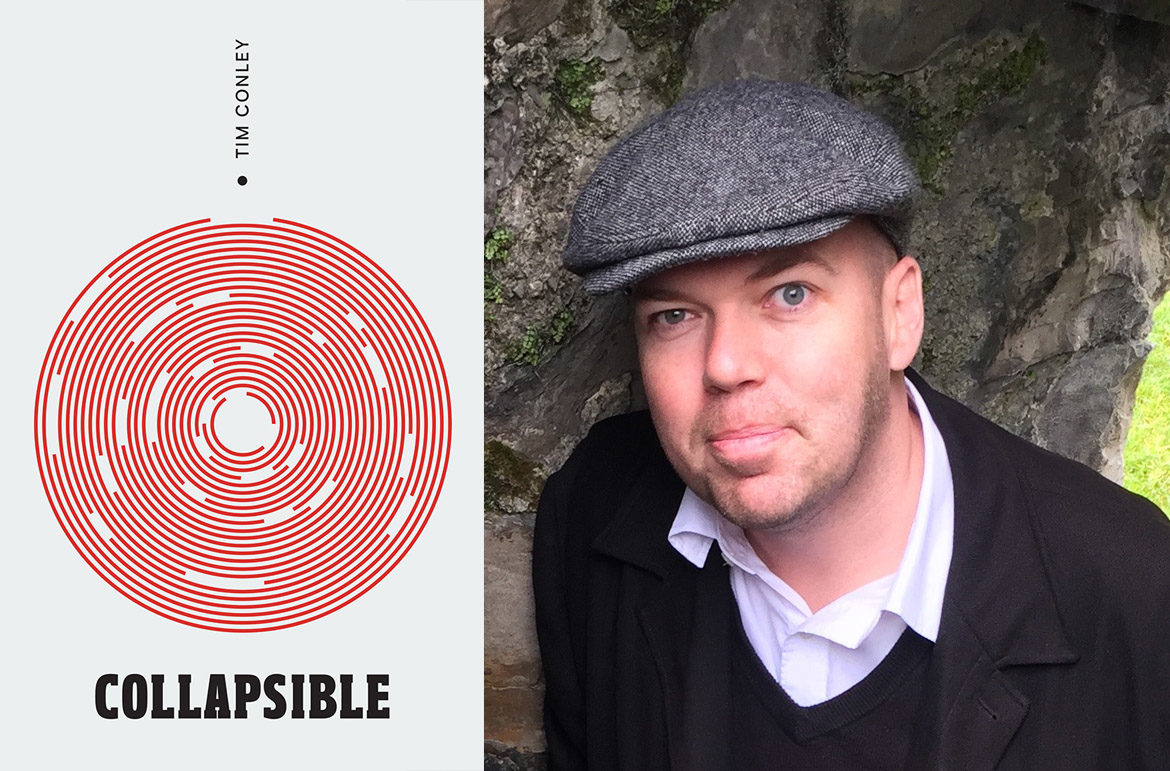The short story form is unambiguously
Collapsible is full of vibrant characters put in strangely relatable or fantastical plots. Do you tend to pull ideas for stories from real life situations, or do start off with a prompt to find your way?
Thanks for your kind words about the book. I’m not sure I would say that I “pull” anything; that’s not exactly how it feels to me. It’s a matter of listening, observing, without worrying particularly about whether the source is imagination, memory, environment, or what have you. This stuff comes to you, if you’re paying attention.
Your use of punctuation around dialogue tags seemed to play a large part in how certain stories were shaped. Quotation marks showed up in stories revolving around more realistic situations, such as in “Birthday or The Day Before She,” while em dashes popped up in stories that played around with cyclical or non-linear stories, like in “Alternative Route” and “Enantiodromia Or Something Like It.” Did you choose the particular punctuation on purpose, or was it something that happened in the stories that you kept in editing?
Punctuation is an oddly personal thing, isn’t it? (The number of question marks in Gertrude Stein could be counted on one hand.) They’re primarily about pacing, those various kinds of squiggles we use, but they also act as visual cues. Quotation marks help delineate what is spoken from what isn’t, and not every narrative wants that distinction made pat. The same thing could be said about the use of parentheses or italics: they are great for some effects and not for others. Each story demands its own methods, and I usually only figure out what those methods are as I go along.
Even in the most outlandish stories, your characters have reasonable goals or fears, and feel incredibly realistic. Do you come up with your characters before your plots? Or do they feed off of each other?
The voice and the situation, the chicken and the egg.
Some of the stories in Collapsible have been previously published. What made you include them within this collection? Was it because you liked the stories themselves, or did it have to do with the universe you built within the stories?
“The provisional quality of short fiction resonates, I think, with our own sense of impermanence.”
The delusion that they were good enough to reprint was the guiding madness.
Short stories can be an elusive, magical medium to work with. They hold whole worlds within the span of a few pages, and readers have to be content with a shorter beginning, middle, and end than they’d find in a novel. Did you ever show these stories to editors or friends before they felt finished, or did you work through them yourself before handing them to someone else?
In some cases I think the short form need not necessarily even be trisected into beginning, middle, and end: the form can dispel the need to do so, or the utility of trying. Every writer needs first readers, but for me, generally speaking, it’s rarely the structure of any given fiction that their insights provoke me to change.
Do you tend to write stories in one quick go, or do you come back to them over time to add and change them?
Either or both: it depends on the specific case.
So many of the stories within Collapsible deal with how people react to the passing of time or tradition. What makes this theme so enjoyable to work with? Are there any other themes that this has grown out of?
The passing of time—itself such a bizarre phrase, when you really look at it and think about just what it is we do with time, and what it does with us— is, I suppose, an ordinary enough theme, and I can see it reflected in my work, but tradition… I’ve not noticed that one.
The titles of each story within the collection are all spot on, hinting or giving away the story entirely. How did you come to title the collection Collapsible?
The title is in a sense an answer to your previous question. Novels explode and sprawl: not only can you never get the toothpaste back in the tube, in the most dazzling cases it seems impossible that it ever fit into the tube in the first place. My brief universes implode under observation (as indeed our own universe might ultimately do). The provisional quality of short fiction resonates, I think, with our own sense of impermanence.
Tim Conley is the author of several books of fiction, poetry, and criticism, including Collapsible (New Star Books 2019), Dance Moves of the Near Future (New Star Books 2015), One False Move (Quattro Books 2012), Burning City: Poems of Metropolitan Modernity (Action Books 2012), and the forthcoming Unless Acted Upon (Mansfield Press 2019). He teaches modernist and contemporary literature at Brock University in St. Catharines, Ontario.

